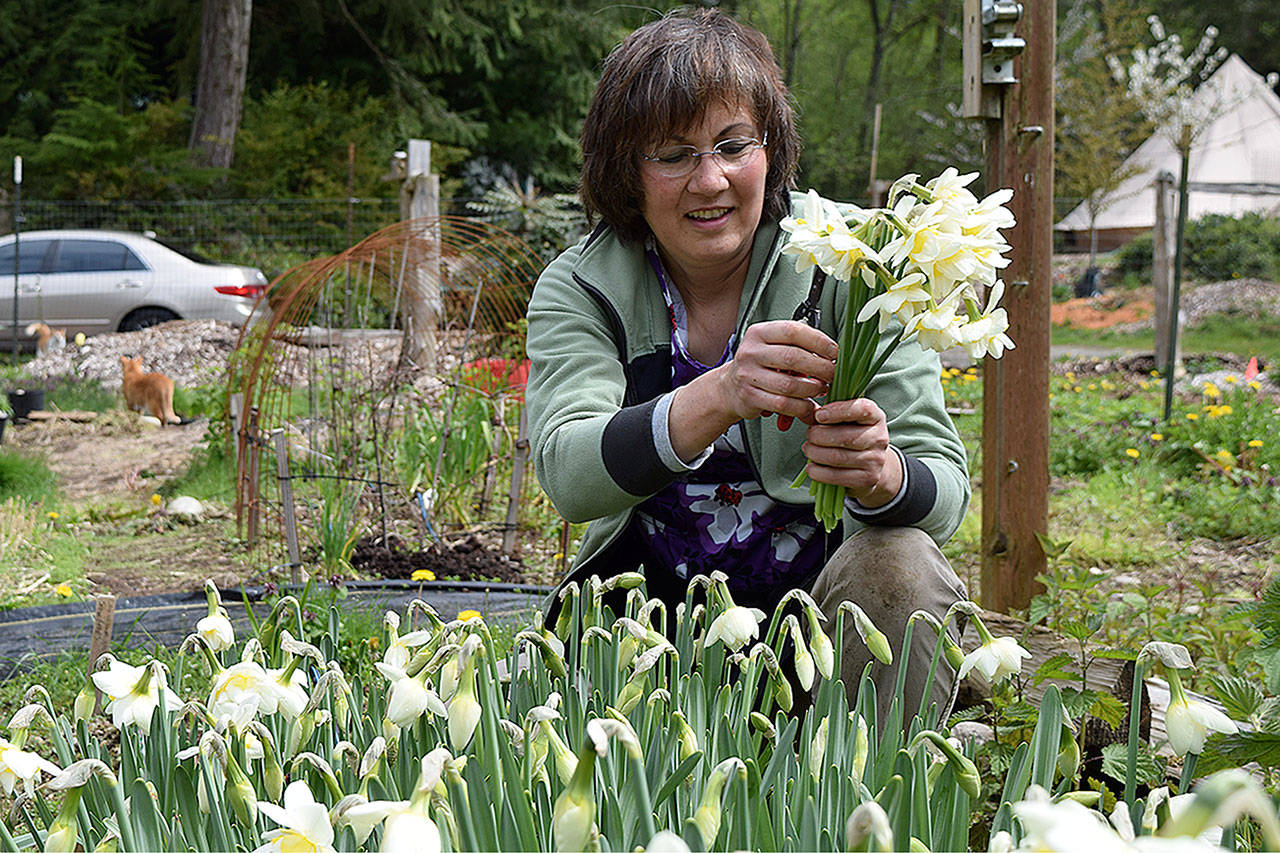For flower farmers on South Whidbey, spring brings the bloom and another year of exponential growth.
That is, if they’re capable of keeping up with the ever-increasing demand.
The flower farming industry is currently booming as the industry undergoes a shift in the way the colorful gifts are bought and grown. For years, the industry has been dominated by products grown in South America that are later shipped to the states. However, consumers are increasingly looking to buy local, seasonal and sustainably-grown flowers.
And according to former Seattle Times garden columnist and Langley resident Valerie Easton, Skagit Valley and Whidbey Island are front runners in the growing movement.
“Whidbey Island and Skagit Valley are the center of an exciting movement towards seasonal, locally-grown flowers,” Easton said. “We no longer want to buy imported, pesticide-drenched flowers picked by underpaid laborers in Ecuador or Colombia.”
The flower farmers on South Whidbey generally agree with that statement. The shift toward sustainable flowers can largely be credited to the founding of the Seattle Wholesale Grower’s Market, a co-op formed by farmers from Skagit Valley to Willamette Valley, Ore., who specifically wanted to sell their home-grown flowers. The co-op’s formation in 2011 ignited a consumer demand for seasonal flowers, and the Puget Sound area’s farmers have been trying to keep up to satisfy customers ever since. The trend then headed south, and continues to move east.
According to the market’s secretary and Langley’s Sonshine Farm co-owner Pam Uhlig, the co-op sold $1.6 million worth of flowers in 2016, despite housing only 13 growers. She says the market is aiming to sell $2.5 million in 2017, and six new growers have been added in order to reach that goal.
A number of South Whidbey’s flower farmers occasionally sell to the market. While Skagit Valley has been home to numerous flower farmers even before the seasonal trend began, Whidbey Island has become an attractive location to grow due to the cheaper property values and the high demand on the island.
“I think we’re seeing the beginning of the wave of local ‘slow flowers,’” Flying Bear Farm co-owner Melissa Brown said. “Even the aesthetic consumers are looking for is changing. The trend is going toward flowers that are more fragile, ephemeral and don’t ship well, like dahlias.”
Brown says her farm experienced “probably triple growth” this past year as she began to sell her pedals to weddings. Flying Bear Farm has since doubled its garden space for 2017, in anticipation of even more growth. Sonshine Farm’s growth mirrors that of Brown’s operation. Uhlig says the farm has most likely grown 300 percent in the past three years, and she’s anticipating 50 percent growth in 2017. A large part of that growth comes from the Seattle-based co-op; about 90 percent of the farm’s product is sold there.
She says she would aim for more growth, but have to be realistic considering the farm’s small work force. Sonshine Farm is composed of Uhlig and her daughter, Kelly Uhlig.
“The Seattle Wholesale Grower’s Market has grown in leaps and bounds, and we’ve struggled to keep up with the growth,” Kelly Uhlig said. “We would like to grow more, but we’d need to hire more workers to help my daughter and me.”
Flower farmers say the rising demand for local and seasonal flowers coincides with the slow food movement, which calls for consumers to support their local food providers not only for health reasons, but to support their local economies. Easton says consumers are more conscious about what is in their food, produce and flowers, and hesitate to put chemically-drenched pedals next to the food on their dinner tables. Uhlig said that many flower farmers are also on board with the industry shift, since the pesticides eventually affect the farmers.
The growing trend has made flower farming a viable primary source of income. Sonshine Farm transitioned to focusing on flowers about five years ago, and remains financially stable. Flying Bear Farm also exclusively grows flowers, and the owners have seen significant growth. But for the farmers and Uhlig, perhaps the most rewarding facet of the trend is the relationship with customers.
“The connection between farmer and consumer continues to grow closer and it’s very gratifying,” Uhlig said. “It’s extremely rewarding to watch the product you’ve nurtured from a seed go into the market, sell and make its way to being planted at places such as Safeco Field.”



